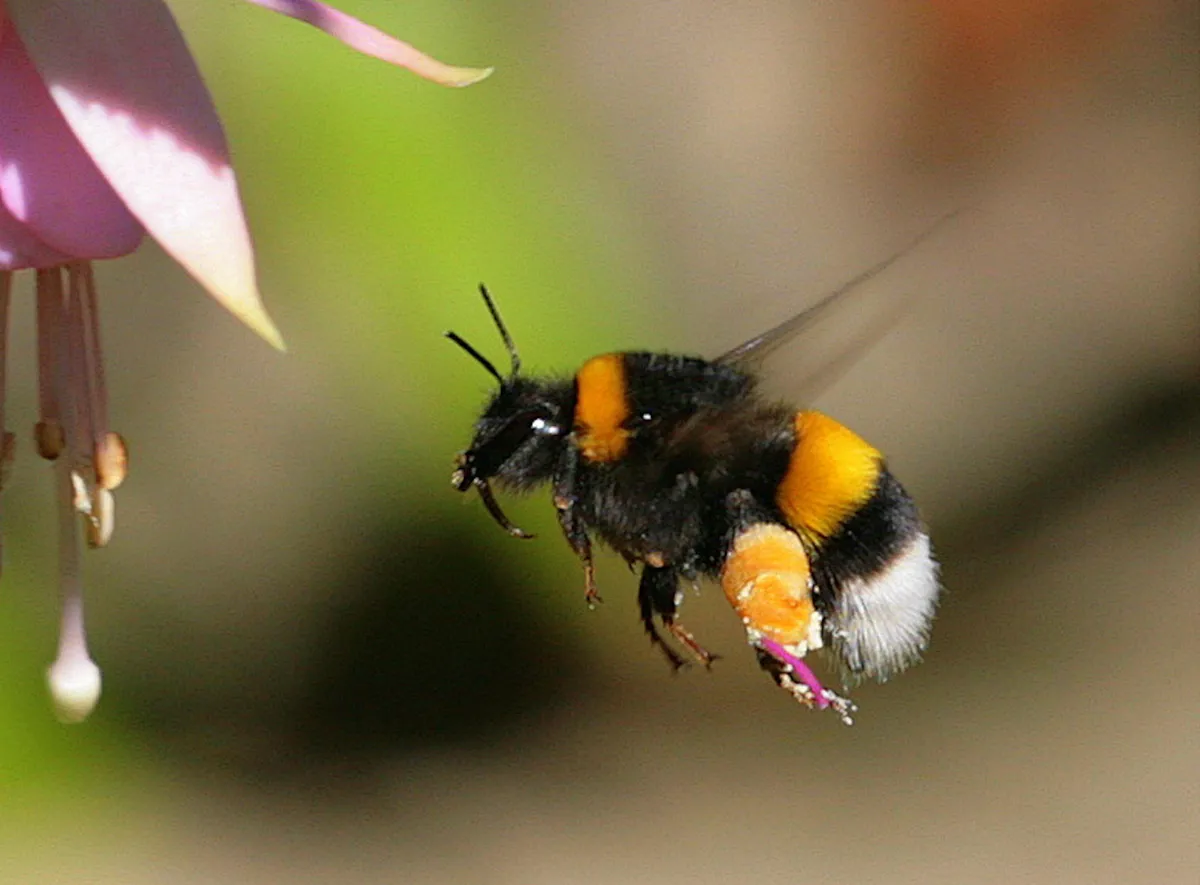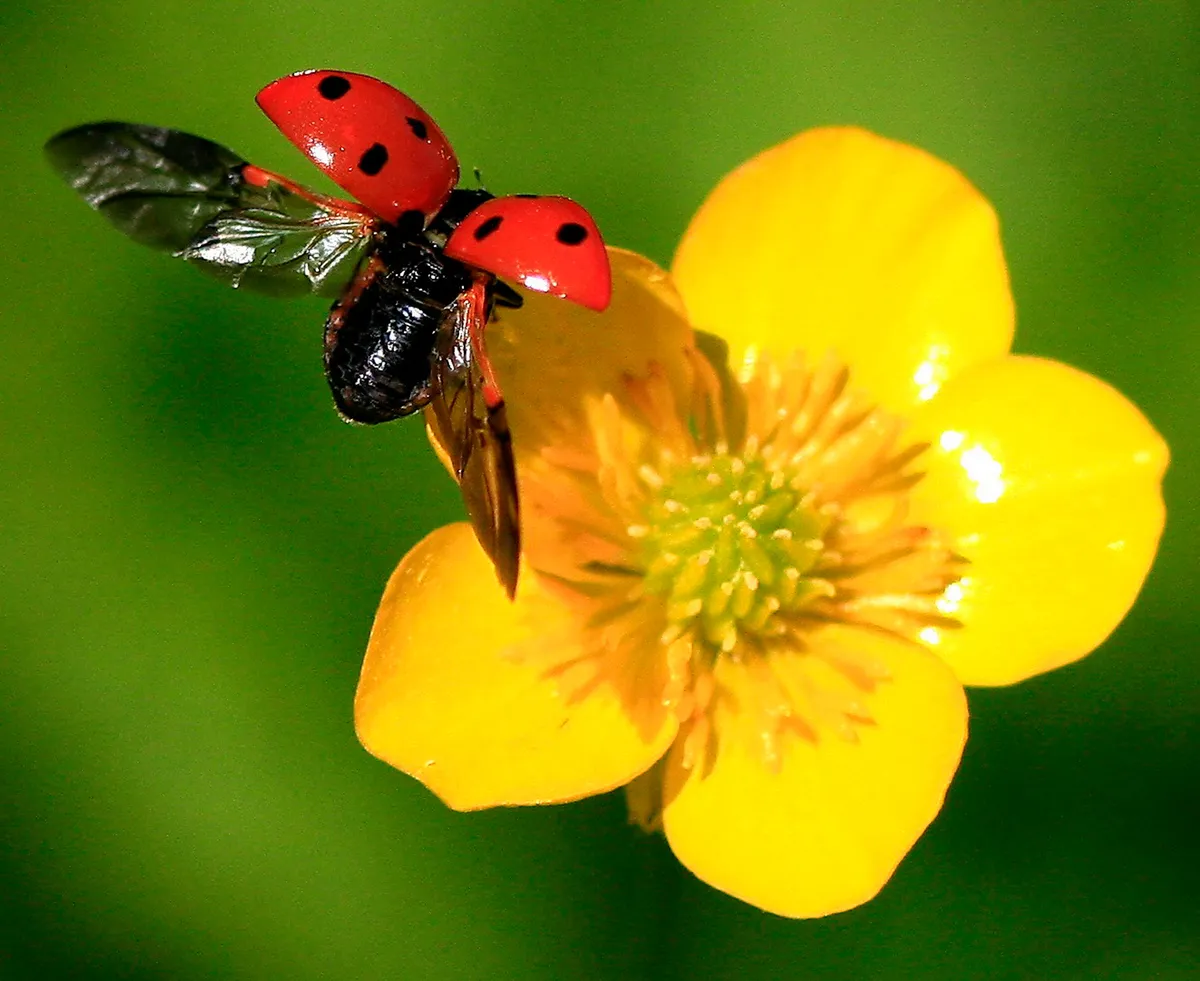There is, according to author Douglas Adams, a knack to flying: throw yourself at the ground and miss. Humans are terrible at flying. We are too big, too heavy, too wingless. Insects, though, thrive in the air, and developing the ability to fly has played a large part in their success.
With wings you can escape a predator; move to more advantageous habitats; radiate, diversify and take over the world. The first insect flew at least 325 million years ago, and it quickly caught on. Like the Duke of York’s men, once they were up they were up – and for them there was no coming down.
How do insects fly?

Insect flight manifests itself in many different ways, whether it’s the breathtaking control of a dragonfly, the exasperating agility of a house fly, the winsome scattering of a cabbage white, the dogged whirring of a stag beetle or the clumsy bumblings of a daddy longlegs.
The principle is simple: four forces – lift, thrust, weight and drag – act on a flying body. Produce enough lift and thrust to counteract the weight and drag, and up you go. Yet the reality is more complex.
What are insects wings made of?
The conundrum facing any flyer is to combine lightness with strength. Insects solve this by making their wings from the same stuff predominant in their exoskeletons: chitin. The typical insect wing is a sandwich of this highly effective, lightweight material: two layers squeezed together and interlaced with a network of veins, which serve the dual purpose of strengthening the wing and circulating blood (haemolymph in insects).
So that’s the lightness and strength taken care of. But to get (and stay) in the air you need a form of propulsion and, as an insect wing contains no muscle, that must come from the body. Insects have evolved two solutions for this. The simpler version is the direct flight mechanism, which is utilised by two orders: Ephemeroptera (mayflies) and Odonata (dragonflies and damselflies), as well as some cockroaches.
Direct flight
In direct flight, muscles act directly on the wings: muscle down, wing up and vice versa. An individual needs two sets: depressors for the downstroke and elevators for the upstroke. It’s a pleasingly simple arrangement, and it works well, even if wingbeat speed tops out at about 200 beats per second (fast, yes, but it can be much faster – read on), limited by the connection of the muscle contractions to the speed of nerve impulses.
Indirect flight mechanism
The more complex version is the indirect flight mechanism, adopted by the vast majority of insects and rather more Heath Robinson-like. It’s a two-stage process: muscles in the body manipulate the thorax, which in turn flaps the wings. Vertical muscles pull on the roof of the thorax, causing wings to rise; longitudinal muscles pull on the ends of the thorax, causing wings to lower.
While this might seem unnecessarily complicated, its big advantage is energy efficiency. Like squabbling siblings, the muscles are antagonistic – they set each other off. And as the contractions aren’t linked to the nervous system’s electrical impulses, the wings can flap much faster – as rapidly as an astonishing 1,000 beats per second in the case of a group of tiny midges called ‘no-see-ums’.
Take yourself, if you can, to a stretch of fresh flowing water on a warm spring or summer’s day. Depending on the timing, you might just get to see two contrasting manifestations of the flight mechanism in action.
The hatching of our commonest mayfly species, the green drake, is quite the event. The bulk of a mayfly’s life – two years or so, in up to 20 stages of growth – is spent on the riverbed, in the larval stage. Then it ascends to the surface to make the transition to adulthood. This consists of two flying stages (a feature unique to mayflies): the subimago and the adult. The newly emerged subimago sits briefly on the water’s surface (its wings are covered with microscopic hairs that are thought to protect them from waterlogging). It has one job: fly to a waterside perch and undergo the moult to adulthood.
Why do some insects have four wings?

An adult mayfly’s needs are simple, too: fly well enough and for long enough to find a mate and breed. While it has two pairs of wings, the hindwings are small and ineffective. The flight, powered predominantly by the forewings, is slow, clumsy and fluttering, but the males make the most of it, flying up in a swarm and parachuting down in an elegant mid-air dance, hoping to catch the eye of the females. It’s a spectacular sight in the low evening sun.
Contrast this with the flight of dragonflies and damselflies. They have two pairs of roughly equally sized wings, and they put them to good use. Not only can they attain impressive speeds, they can hover, glide and fly backwards. They can also change direction in an instant, all the better to outwit their hapless, small insect prey – dragonflies have a hunting success rate of up to 95 per cent.
To do all this, they have separate control over all four wings. This is never more apparent than when they are hovering – an exercise that requires a technique known as counterstroking. The dragonfly executes a downstroke with one pair of wings that it simultaneously cancels out with the other pair. Simple enough in theory, but complicated by the instabilities in the air produced by those very wingbeats, as well as complications such as swirling winds.
That wing control is also useful when taking off. An individual beats all four wings in unison to generate the initial impetus, then within a couple of beats increases the speed of the hindwings and decreases the angle of attack to move up and forwards.
What are the advantages of just two wings?
An insect doesn’t need four wings to be super-manoeuvrable. Take the house fly, that much maligned habitué of slightly soiled kitchen surfaces worldwide. Like all members of the order Diptera, house flies found that two wings were enough for flight – but what they really wanted was insane reaction times and extreme manoeuvrability. So they shrank their hindwings into tiny golf-club-shaped organs known as halteres.
What are halteres?
These act as both gyroscope and metronome. They oscillate in time with the wingbeats, controlling the contractions of the steering and flight muscles with astonishing precision. This means the fly has supreme control over its position in the air, and can correct itself faster than the blink of a human eye. This is handy for predator evasion (ham-fisted humans being a prime example), but it also enables them to execute effortlessly graceful landings (including on the ceiling). Whenever I’m irritated by the buzzing of a fly in my office, I try to remember that I’m in the presence of something approaching an aeronautical miracle.
How do beetles fly?
For less spectacular aerial feats, but an even more effective wing adaptation, we can look to beetles. They are incredibly successful and diverse – about 400,000 species worldwide at the last count. That’s 40 per cent of insects, and 25 per cent of all animals. And they owe this success to what they did with their forewings.
Not for them the speed and agility of the Diptera. Instead they evolved the forewings into protective coverings called elytra. These simple but ingenious casings enable beetles to burrow into rotten wood, down into the earth, under leaf litter or into the smallest crevices – a huge advantage when conditions are hard. But while the elytra enhanced their survival capabilities, they brought their own practical problems. Take the ladybird, one of our most visible and popular beetles.
While a dragonfly or fly is ready to launch at any moment, a ladybird has to unpack its hindwings from underneath the elytra. Taking off is straightforward enough – open the elytra, unfold the wings (the work of about a tenth of a second), and off they go. But folding them again on landing is more complex.

First the ladybird closes the elytra, leaving the hindwings sticking out like an untucked shirt. It then uses its abdominal muscles to nudge and push and slide the wings gradually into place, a procedure it has to execute with extraordinary precision – it can’t just shove the wings back under the elytra the way we might stuff a map into a car’s glove compartment. This is advanced origami, using intricate crease patterns, each mountain and valley meticulously placed for the most efficient stowing.
Contrast the relatively nimble aerial stylings of the ladybird with the endearing bumblings of male stag beetles, whose meandering zigzag flight – with accompanying sputtering sound reminiscent of an old biplane – gives the impression they’re under the influence of a large gin and tonic. The meandering has a purpose, though – the male beetles are after pheromones released by females, wafting on the wind and as elusive as a phone signal on a remote island.
Butterflies and moths
Unpredictable flight patterns can serve another purpose, as demonstrated by the skittery flight of some butterflies. Tempting as it is to ascribe this to temperament, it’s thought the clue lies in toxicity. Toxic butterflies repel predators with their unpalatability; non-toxic ones can’t be so certain, so make themselves more difficult to catch by flying all over the place.
While butterflies and moths, in general, might have slower wingbeats than other insects – the swallowtail’s lolloping flight comes in at a zen-like five beats per second – there are exceptions. One of the most visible – and a summer treat in any British garden – is the hummingbird hawkmoth.
It announces itself with a low, breathy hum, whirring smoothly towards a flower of its choice – jasmine or verbena, perhaps – and hovers to sup at the nectar with its long, angled proboscis. Still, it’s not hovering of quite the same order as hoverflies, which give the impression of mid-air suspension.
How do honeybees fly?
The final word must go to the good old honeybee, an unexpected outlier in the world of insect flight. There are many fascinating things about honeybees – the organisation of the hive, swarming, the way they fan their wings to regulate the hive’s temperature – but often overlooked is the way they fly.
They flap their wings at about 230 beats per second, which is approximately the same frequency as a fruit fly – the difference being that the honeybee is about 80 times bigger. They do it by adopting a comparatively shallow wing stroke of about 90º, an angle they only increase if burdened with pollen or nectar. It’s the equivalent of the famous weight-carrying abilities of termites and ants – but in the air, backwards and in heels.

Flight is a remarkable thing, going on all around us, and all too easy to take for granted. Insects are brilliant at it – make sure you take a moment to admire their aeronautical prowess this summer
Images © Getty Images
